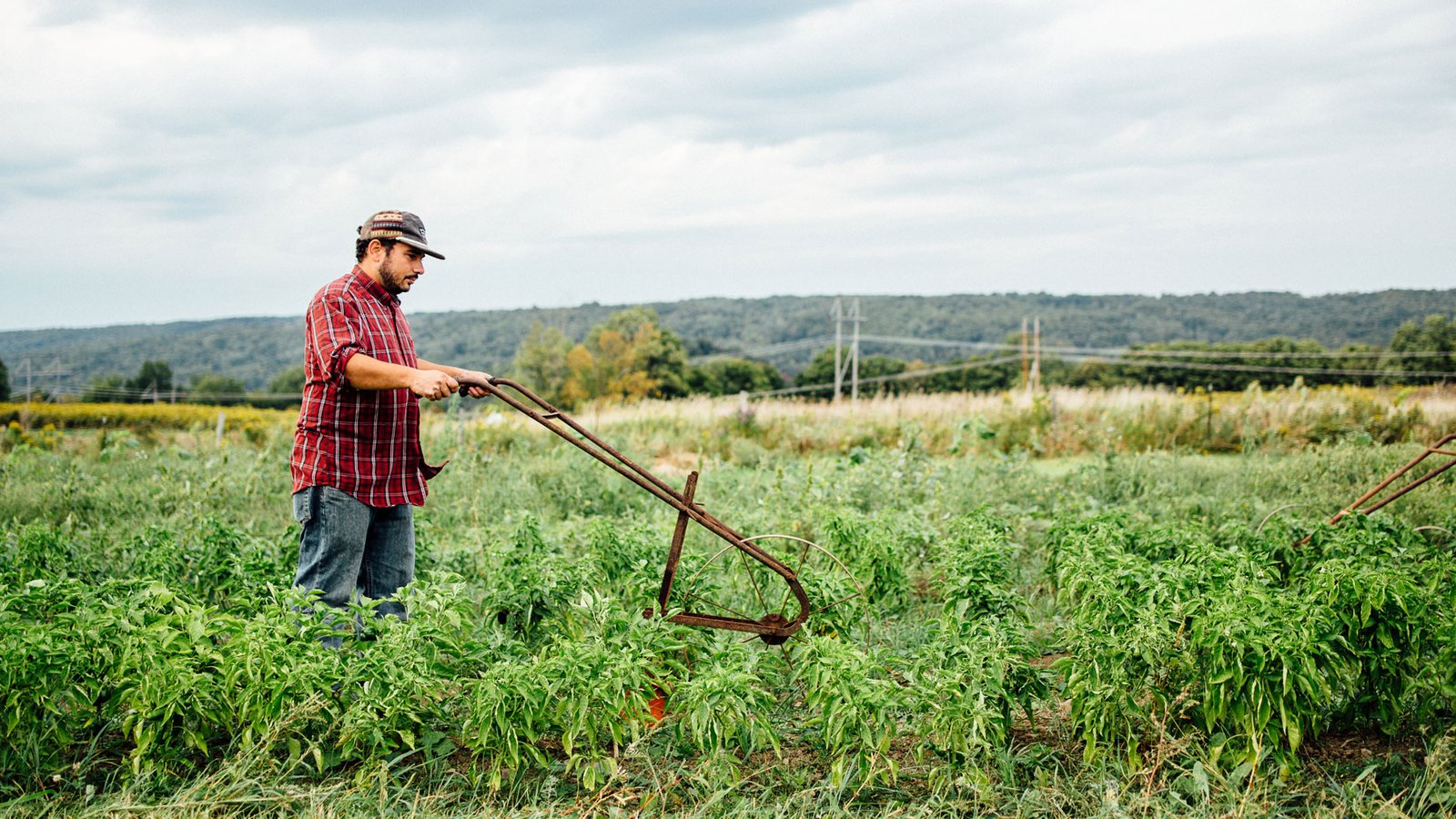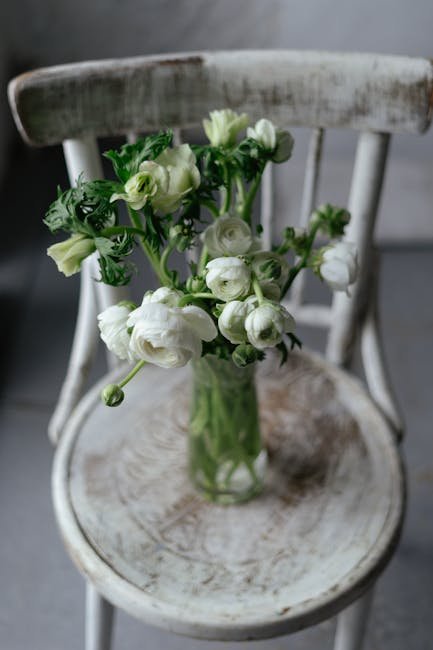
We may earn revenue from the products available on this page and participate in affiliate programs. Learn more ›
Sign Up For Goods 🛍️
Product news, reviews, and must-have deals.
One key to successful gardening is using the right tools. Since the beginning of civilization, humans have crafted rudimentary instruments to cultivate the outdoors for food (and later, for beauty), and throughout history, those tools have become increasingly more sophisticated. “However, some tools remain indispensable, proving that great design withstands the test of time,” says Christopher S. Raimondi, CEO and president at Raimondi Horticultural Group in Ho-Ho-Kus, New Jersey.
“Today’s gardening world not only relies on these classic implements but also integrates sustainable practices, ensuring efficiency while protecting the environment,” he explains.
There’s a world of gardening tools out there, but the following are some of the core old-school ones you need to keep in your shed, followed by practical gardening tips and advice for anyone interested in progressing beyond chaos gardening.
Trowel
Garden Guru Heavy Duty Trowel
The Garden Guru Heavy Duty Trowel is made of stainless steel, which resists rust, and it has an ergonomic handle. Used by early civilizations to cultivate small crops, Raimondi says the trowel remains a gardener’s best friend. “Modern versions incorporate ergonomic handles and rust-resistant metals, making digging easier,” he explains. Additionally, some sustainable models incorporate recycled materials.
Hoe
Corona 3244 Hoe
The extended reach Corona 3244 Hoe makes it easier to reach into tight or far-away areas in your garden comfortably. Dating back to Mesopotamian agriculture, Raimondi says hoes were originally crafted from wood and stone. “Today, forged steel stirrup hoes provide effortless weed control, while eco-friendly designs promote aeration without disturbing vital soil microbes—essential for regenerative gardening,” he shares.
Earthway 6500 High Wheel Cultivator
The Earthway 6500 High Wheel Cultivator has comfortable handles and three positions from which to choose.
Lindsay Springer, Ph.D., director of plants, nutrition, and digital agriculture at Gardyn, recommends a wheel hoe if you have an extra-large plot. “Especially those with cultivator tines and other attachments like plow blades, sweeps, stirrups, and harrows,” she says. Springer admits that it’s probably not worth it for smaller gardens and raised beds.
Springer also recommends a stirrup hoe for walkways and between plants, and a triangle hoe as a great tool for weeding. “You can get them as a handheld or on a long handle if you prefer standing up,” she says.
Watering Cans
Qilebi Watering Can
This watering can has a long spout, a detachable shower nozzle, and is available in several colors. Historically, Raimondi says, watering cans were basic clay or tin containers. “Now, sleek, lightweight designs incorporate detachable spouts for water efficiency,” he explains. “Rainwater collection systems, integrated into modern cans, allow gardeners to reuse natural resources, reducing water waste,” Raimondi adds.
Courtney Sixx, founder and co-designer of Bouquet Box, a floral company, likes galvanized watering cans and says they provide the perfect mix of serenity and nostalgia. “These old-style metal watering cans are substantial, and the water flows through in a soft trickle that will never shatter delicate flowers or seedlings.” In addition, Sixx says they’re just fun to hold in your hand.
Spades and Rakes
Groundskeep II Rake
The Groundskeep II Rake has a 55-inch fiberglass handle and 28 hardened steel tines. Spades played a critical role in early farming societies, and Raimondi notes that they’re now quite durable due to their high-carbon steel material. “Adjustable rakes, once simple wooden tools, now boast cushioned grips, easing soil preparation and leaf collection.” Additionally, he notes that some models can be made from recycled materials and feature bamboo handles.
Axes and Pruning Shears
Fiskars X25 Splitting Axe
The Fiskars X25 Splitting Axe has a shock-absorbing handle with a non-slip grip. Axes were used by early settlers to clear land, and Raimondi says they’re now significantly more advanced. “Axes are engineered with shock-absorbing handles and ultra-sharp blades for efficiency,” he explains. “Pruning shears, vital for shaping bonsai trees in ancient Japan, have evolved into ratcheting mechanisms that reduce strain and improve precision.” He notes that you can purchase battery-powered or manual shears as sustainable alternatives to gas-powered landscaping tools.
And according to Sixx, bypass pruning shears are invaluable. “I employ them for everything from pruning the roses to cutting flowers for the home,” she says. Sixx notes that a good pair will give clean cuts, which keeps your plants healthy, and says that her pair is broken down and battered, but she loves them.
Hori Hori Knife
Fiskars Hori Hori Garden Knife with Sheath
This stainless steel Hori Hori Knife has a drop-point blade that is rust- and scratch-resistant. A Hori Hori knife may be a small gadget, but Sixx explains that it’s a hard worker. “It weeds, cuts, and even has markings on the blade for bulb plantings.” She admits that she didn’t think she would like it so much, but says she now brings it with her whenever she’s gardening.
Wooden Dibber
The Gardteck Wooden Dibber
The Gardteck Wooden Dibber has a stainless steel bottom and includes accessories. So, what’s a wooden dibber? Sixx explains that it’s basically a sharp stick. “However, it ensures you plant seeds and bulbs at the proper depth each time—it’s super simple and simply handy. It’s more precise than trying to use a hand shovel.
Garden Fork
Garden Guru Hand Fork
With the Garden Guru Hand Fork, you can plant, mulch, and pull weeds. Sixx points to a garden fork as something you need in your planter’s toolbox. “I use it for breaking up soil, mixing compost, or preparing the ground for a new bed, and it does the kind of heavy lifting that other tools can’t,” she explains.
Fiskars 3-in-1 Garden Tool Set
The Fiskars 3-Piece Garden Tool Set covers the basics. If you have a smaller garden or a raised bed, Springer recommends the Cutco tool set, which she has and loves. “A heavy-duty handheld spade/trowel and handheld cultivator/rake is great for weeds, loosening soil for planting seeds or transplanting from pots bought at the nursery.”
Gardening Tips and Tricks
Below is advice from our three expert sources to help you get the most out of your gardening efforts:
Monitor Moisture Levels
Raimondi warns against letting your plants get stressed due to not enough moisture during the early summer months. “Monitor water levels daily and stay ahead of stress symptoms since this stress will affect fruit and vegetable quality, and with flowers and shrubs, their ability to withstand other seasonal conditions later on in the growing season,” he explains.
Choose Quality Tools
Quality tools can make a significant difference in your garden, and Springer warns against spending money on flimsy ones. She recommends robust tools (preferably ones you can pick up and feel in the store); when shopping online, look for reviews that mention quality and durability. If it seems like it will bend and break, Springer says it will. “Gardening can be very hard on tools, and the last thing you want is a bent or broken one after trying to pull out a rock or weed.” In fact, she says that buying old tools at a garage sale can often provide better tools at a better price than buying new ones at a big-box store.
Mix it Up
According to Sixx, successful gardening is more about observation than perfection. One of her quirky tricks is using crushed eggshells and cooled chamomile tea in her watering can. “Eggshells add calcium and repel slugs, while chamomile helps prevent damping-off disease in seedlings,” Sixx explains.
“I always companion plant marigolds near roses and veggies to keep pests at bay with their natural scent,” Sixx adds. Additionally, she uses old coffee filters at the bottom of pots to prevent soil from leaking while maintaining proper drainage. “And perhaps most importantly, I talk to my blooms—not just to cheer them on, but to stay mindful of their growth, color, and any little shifts that might signal some extra TLC.” Sixx says that gardening is her love language, and the more she tunes in, the more her plants gush with gratitude.
Consider Your Environment
Before you start buying seeds and plants, Springer recommends taking note of your environment and soil quality. “Is it sunny? Shady? Windy? Wet and soggy or well-drained and dry? Full of clay or rocks? Rich and loamy? Full of weed pressure or ravaged by deer? Close enough to a water source?” She says that prepping your garden beds, knowing the planting environment, and picking plants that can thrive in those spaces will improve your chances of a healthy, thriving garden.
Consider Your Lifestyle
If you’re a beginning gardener, Springer advises setting up your garden for your life—and not the other way around. “Make your grand garden dreams a year-by-year progression so it feels easier to manage as you get the hang of it and find out what works and what doesn’t.” She says that gardening should be fun and rewarding, instead of stressful. “Doing things incrementally makes it feel manageable yet still progressing towards your vision of a green, magical oasis.”
Work Smarter
Learn how to work smarter, not harder. “Whether it’s watering, lighting, or fertilizing—consistency is key and there are smart systems today, like Gardyn, that can automatically adjust the lighting and watering/fertilizing schedules based on your plant’s growth stage, so you never have to guess what to do and your plants thrive, even when life gets busy,” Springer says.
Be Consistent
If you can, Springer recommends gardening every day—and says you won’t regret it. “It’s not only about the plant care and harvests, it’s the mindful moments of awe when your seeds start to sprout, or you notice a new butterfly, or munch a fresh cherry tomato after the rain,” she explain, Springer says this is your own magical place and you can find peace and serenity in your garden.

More deals, reviews, and buying guides
The PopSci team has tested hundreds of products and spent thousands of hours trying to find the best gear and gadgets you can buy.


